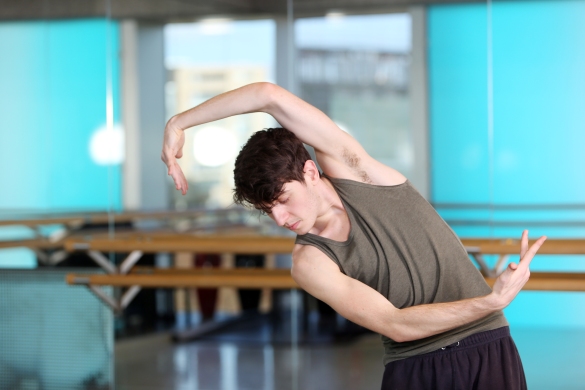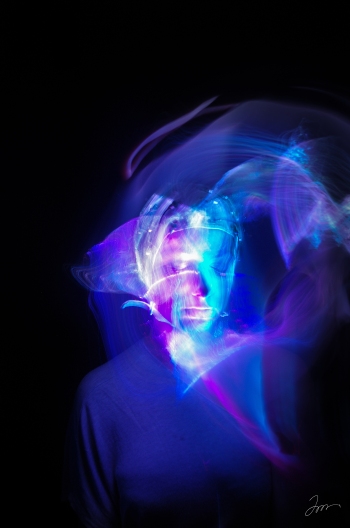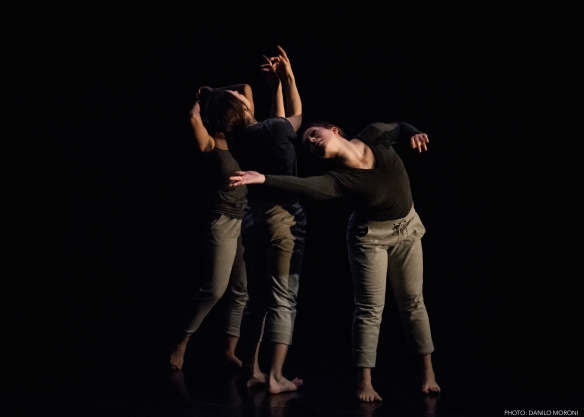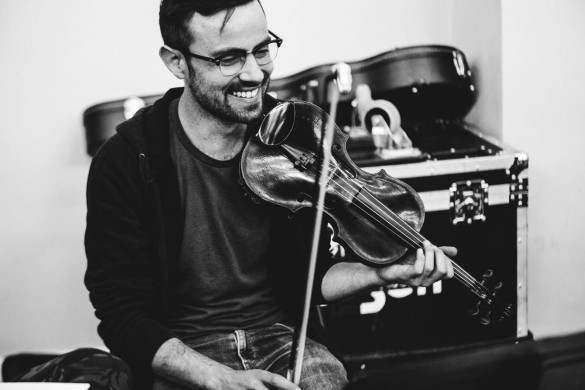
Will Harvey is a violinist, violist, composer and arranger who is currently studying for a MMus at Trinity Laban. A few days before his recent concert at the Royal Albert Hall with British rock group Bring Me The Horizon*, we talked about his experiences playing with bands and arranging for them, the challenges this presents, and how he creates his own opportunities.
*Bring Me The Horizon is British band from Sheffield, formed in 2004. They have released five studio albums to date, and follow a busy touring schedule worldwide. Their latest album, ‘That’s The Spirit’ debuted at #2 in UK charts.
You’ve just been on tour with Bring Me The Horizon, and you’re working towards a concert at the Royal Albert Hall. Tell us more.
Actually I was preparing the arrangements for the tour. The other arranger, Simon Dobson, and I we were both happy with our versions of the arrangements but the band’s Musical Director (MD) insisted on going through the scores. There was no opportunity for us to meet with the band in London. It turned out the only way we could go over the music was to jump on a tour bus to Brussels! I ended up staying on the bus for a week.
Bring the Horizon got booked to play the show at the Royal Albert Hall as part of the series for the Teenage Cancer Trust, and the band asked me to arrange an orchestra for it back in September. They told me what their budget was and asked if it was possible. At the time I said ‘probably not, but I’d quite like to do it’. In the end we cooked up a plan and managed to find a way around it, and now it’s going ahead.
How did you find this opportunity?
Before I came to Trinity Laban, I used to be in a band called Dry The River for about five years. We were signed to RCA record label and toured the world for a while. We were the band of the moment for about five minutes in 2012. Through that I met so many people in different groups who I stayed in contact with, so have ended up working with a number of them.
Last year I established a session group called Parallax Orchestra with cellist Maddie Cutter. The idea was to work with bands but rather than just playing on sessions we would actively seek collaborative work. So for example we’d approach artists and ask them if they would be interested in string arrangements of their music, remixes and so on. We want it to be an artistic venture as well as a business initiative. Through Parallax Orchestra we started finding a lot more work. We’ve worked with quite a few groups recently, so we’re now in the position to fix performers for various artists and tours. We’ve kept our focus on playing on the recording sessions but we can pass out the live gigs to full-time professionals. Maddie and I are both studying so we’re limited in terms of time we can spend on external projects.
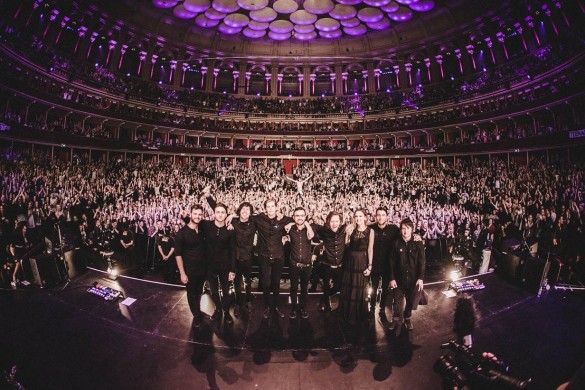
What are the challenges of arranging music for a band like Bring Me The Horizon?
It’s quite complex. We have to think not just about the orchestra but about playing music with musicians who are not used to adapting to new arrangements. We have to use click tracks, in-ear monitors and match up our arrangements with the band’s existing structures, while some things run on backing tracks. Everything has to be precise, so we also record count-ins. One of the most difficult things about arranging for the band is how to build our arrangements around all of these different aspects.
There’s also a lot to think about when it comes to the style of arranging. We’ve got some of the band’s older songs which are much heavier, as well as more recent, softer material. How do you arrange for those different sounds? I was inspired by my time in punk bands, so I’ve essentially written ‘third-wave, ska-punk’ horn lines. Adapting that kind of sound for an orchestra presents new challenges. Also, some of the songs are epic and anthemic, but metal. Again a totally different approach. You can’t draw solely from classical sources, even though you’re writing for an orchestra.
Which skills were most useful for this work, and how have your studies at Trinity Laban benefited you?
The Paul Bartholomew arranging module was massively helpful. I definitely wouldn’t have been able to write for a symphony orchestra before coming to study at Trinity Laban. There’s just no way I would have been able to do that. At Trinity Laban if I didn’t know what to do there was always somebody I could ask for advice.
How does this experience compare to working towards a classical performance?
It’s completely different. It involves exponentially more work. I mean, I don’t think I’m exaggerating when I say I’ve put in over 1000 hours of work into this gig. Seriously, over 1000. The music is up to me, and it’s never finished until the performance is over. The same is true of a classical performance of course – you can always practice more – but this isn’t just practice. If I don’t like the way something goes, I can change it. So it’s in this constant state of flux and I won’t stop working on it until the gig is over.
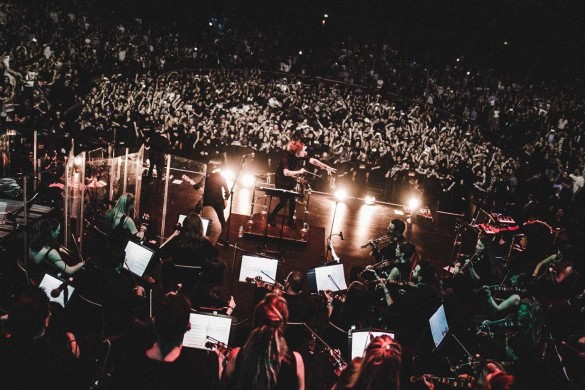
What have been the highlights of this experience so far?
The whole thing has been so rewarding. Sometimes it’s hard but it’s quite remarkable when I consider how many sheer pages of music we’ve written over the last few months. It’s in the hundreds. The actual arranging process is really fun. Working with other arrangers too has been great and I’ve learned a lot from that. The conductor, Simon Dobson, has been amazing to work with. Simon is a trumpet player who writes for brass bands and string groups in studio sessions. But he also plays in rock and punk bands, so he’s got all the essential skills for this job. He’s been doing this kind of stuff for years, and because we spent a lot of time working in the same room, I’ve learned a lot from him.
What advice would you give to other students?
Don’t go on tour unless you’re getting paid well! Also, arranging music is much more work than one might think, so you should know exactly what you’re getting into.
Do you value these skills and experiences as a young musician operating in a highly competitive industry?
Absolutely. It seems that many people have the view that there is no work in music anymore, that the music industry is struggling, we’re all getting paid less and less and that it’s getting worse and worse. I don’t think that needs to be the case. There’s actually more and more music being made everywhere, and it’s up to you how you can be a part of that and turn it to your advantage. Just because there’s less work along the conventional routes doesn’t mean that you can’t go out and create your own, which is what has happened with Parallax Orchestra. We planted an idea in people’s heads and suggested that we do something, and they responded, saying ‘let’s do it’. We’ve created our own opportunities and our own demand.
Marlowe Thornes-Heywood
Graduate Intern – Press & PR

